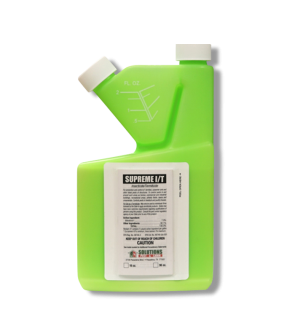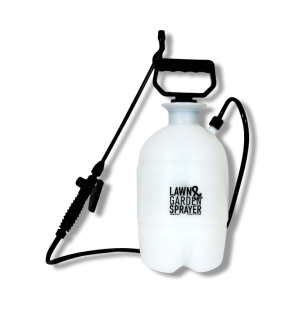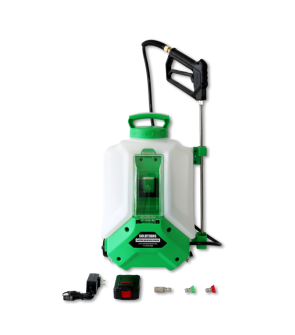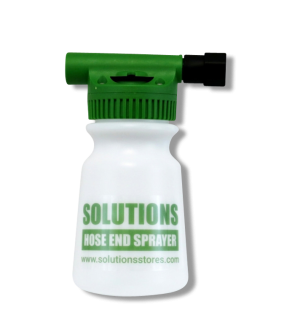Gain access to personalized product screening, the best pricing, rewards, and more!
Most Effective Products
Puss Caterpillar Control: How To Get Rid of Puss Caterpillars
This page is a general puss caterpillar control guide. Using the products and methods suggested, you will get control of puss caterpillars. Follow this guide and use the recommended products; we guarantee 100% control of puss caterpillars.
When you think of caterpillars, you might imagine harmless little green worms munching on leaves. But the puss caterpillar, also known as fire caterpillar, woolly slug, tree asp, asp caterpillar, puss moth, opossum bug, asp, Italian asp, or southern flannel moth, is a perfect example of how nature can be both beautiful and deceptive. With its soft, furry appearance, it looks almost like a tiny, fluffy kitten hence the name “puss.” But don’t let its adorable looks fool you: the puss caterpillar is one of the most venomous caterpillars in North America.
The puss caterpillar is the larval stage of the southern flannel moth. Its dense, silky hairs cover a body equipped with venomous spines. These hairs give it a furry, plush toy-like appearance, often mistaken for harmless fluff.
The real danger lies beneath that furry coat. Hidden among the hairs are tiny spines that deliver a potent venom when touched. The sting from a puss caterpillar can cause intense pain that feels like a bee or wasp sting but often lasts much longer. For some people, the reaction can be quite severe and might require medical attention.
If you have noticed puss caterpillars on your property, the following guide can help. Follow along to learn more about puss caterpillars and how to eliminate them using our recommendations and expert advice.
Identification
Before you can proceed with treatment, you must be sure that the pest you are dealing with is a puss caterpillar and not some other insect. Misidentification can lead to using the wrong treatment methods and products, which can end up being a waste of time and money. Here are some identifying characteristics of puss caterpillars:

- Puss caterpillars, the larval form of the southern flannel moth, are small, teardrop-shaped insects covered in thick, silky fur that makes them look like a tiny kitten or a ball of fluff. They typically measure about 1 to 1.5 inches long and can be tan, gray, golden, or even creamy white in color. Their fur hides short venomous spines that can deliver a painful sting if touched.
- The caterpillar's head and legs are tucked underneath its furry body, making it appear more like a fuzzy lump than a typical caterpillar.
- Adult puss caterpillars transform into southern flannel moths, which are just as fuzzy as their larval stage. These moths typically have a wingspan of about 1 to 1.5 inches and are covered in dense, silky hairs that give them a plush, flannel-like look. Their coloration ranges from creamy yellow or orange to light brown, often with darker accents on the legs and wing edges. The wings lie flat over the body when at rest, and the moth has a rounded, stout shape. Unlike their larval stages, the moths lack venomous spines and are harmless.
Use the image and description above to help you to identify this pest. If you are still unsure, send a photo to our email, and one of our experts will respond with the correct identification and treatment options.
Inspection
After identifying puss caterpillars on your property, you must conduct an inspection. During this phase, you must pinpoint the trees or shrubs from which the puss caterpillars eat. Remember to wear gloves and long clothing to protect yourself from accidentally touching the pest when conducting the inspection. Use a long stick to move branches and leaves that may harbor puss caterpillars.

Where To Inspect
Puss caterpillars can be found throughout the United States, and are especially common in southeastern states like Texas or Florida. They are most active from late spring to early fall.
Puss caterpillars are commonly found on the leaves, branches, stems, and trunks of trees and shrubs such as oak, maple, holly, elm, hackberry, sycamore, pecan, apple, plum, willow, cherry, roses, and hibiscus.
They are most commonly seen in wooded areas, yards, parks, gardens, and residential neighborhoods.
What To Look For
Puss caterpillars are slow-moving and usually found on the foliage, where they feed at night and rest on the undersides of leaves during the day.
They feed on the edges or undersides of leaves, leaving behind irregular holes or scalloped edges. In severe infestations, foliage may appear skeletonized or heavily stripped.
Heavy feeding can cause leaf loss or browning, making trees or shrubs look stressed or unhealthy.
You might notice the caterpillars themselves resting on leaf undersides, branches, or even the ground. They look like little tufts of fur and may be cream, gray, or golden brown.
Puss caterpillars do not typically produce noticeable silk while feeding like some other caterpillar species. However, they do produce silk when preparing to pupate. When they’re ready to transform into adult southern flannel moths, they spin a small, tough silk cocoon, often hidden in bark crevices, under leaves, or in leaf litter near the base of trees.
Someone brushing against leaves or bushes and experiencing a sharp, burning sting may have unknowingly come into contact with a hidden puss caterpillar.
Treatment
Once you have confirmed puss caterpillar activity, you will begin treatment. First, read all product labels, follow the application instructions on these labels, and wear personal protective equipment to stay safe.
Treatment for puss caterpillars is easy and only needs to be applied outdoors. We recommend Supreme IT, a powerful insecticide that will create a barrier around your home's structure to prevent and kill any caterpillars from coming close.
Step 1: Apply Supreme IT

Supreme IT is a broad-spectrum insecticide labeled for treating over 70 pests, including leaf-feeding caterpillars. Its long residual effect can continue to control pests for up to 90 days after application.
Measure the square footage of your treatment area to determine how much Supreme IT you need to cover the entire area. To do this, measure the length and width of the treatment area in feet and then multiply the two values (length X width = square footage).
Apply 0.125 to 0.25 fl. oz. of Supreme IT with one gallon of water to treat 1,000 square feet.
You will need to mix with water with a handheld pump or backpack sprayer. For uniform coverage and to reach higher tree canopies, we recommend you mix and apply this product with a Solutions Electric Backpack Sprayer or the Solutions Hose End Sprayer.
Fill a sprayer with half a gallon of water and add the appropriate amount of Supreme IT based on your calculations. Fill the remaining half gallon of water, close the lid, and agitate the sprayer until the Supreme IT is well mixed. You are now ready to spray.
When spraying trees, aim for complete coverage of the tree’s foliage and branches. Next, broadcast your solution evenly over your lawn with a fan or cone spray pattern. Then, spray shrubbery and ornamentals from above and below to coat all leaf surfaces.
Do not let people or pets enter the treated area until completely dry.
Prevention
Prevention is the final step to completely controlling puss caterpillars and limiting the possibility of re-infestation. Take on the following preventative measures to ensure puss caterpillars do not return:

- Keeping your yard tidy by pruning overgrown branches, removing plant debris, and trimming low-hanging limbs can help reduce their habitat. If you prune or remove branches with caterpillars or cocoons, bag and dispose of them properly to prevent spreading.
- Consider planting tree and shrub species less favored by puss caterpillars to reduce the chance of infestation.
- Strong, healthy trees and shrubs are more resilient to pest damage. Regular watering, and fertilizing can boost their defenses. We recommend watering with no more than 1 inch of irrigation once per week. Best to do so in the early morning so the foliage has enough time to absorb the water.
- Since southern flannel moths (the adult stage) are attracted to lights, especially bright white or blue-toned bulbs, minimizing or turning off unnecessary outdoor lights can help reduce moth gatherings around your home or garden. Using yellow bug lights or motion-activated lights instead of constant bright lighting can also make your property less appealing to these moths, ultimately lowering the number of eggs laid on nearby trees and shrubs.
- When working in areas prone to puss caterpillars, wear long sleeves, gloves, and pants to reduce the risk of accidental stings.
- Spray your property with Supreme IT every 90 days to keep their population in check, especially in the spring and fall seasons when their appearance is more likely.
Key Takeaways
What are Puss Caterpillars?
- The puss caterpillar is known for its hairy appearance and plant destruction. Its hairy body is dangerous to touch and can cause severe allergic reactions.
How To Get Rid of Puss Caterpillars
- We recommend controlling puss caterpillars with an application of Supreme IT to protect your yard.
Preventing Puss Caterpillar Reinfestation
- To reduce puss caterpillar infestations, keep your yard tidy by pruning and properly disposing of infested branches, plant less-preferred tree species, maintain healthy plants with proper watering and fertilizing, minimize outdoor lighting to deter adult moths, wear protective clothing when working near them, and apply Supreme IT spray every 90 days, especially in spring and fall to help control their population.










